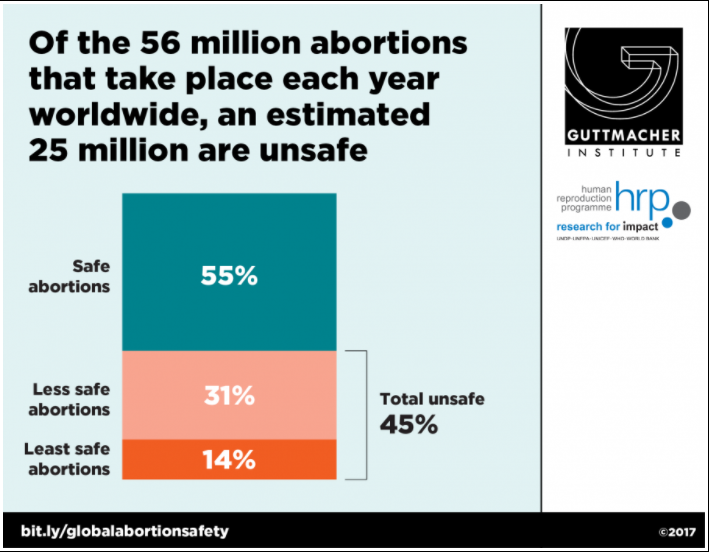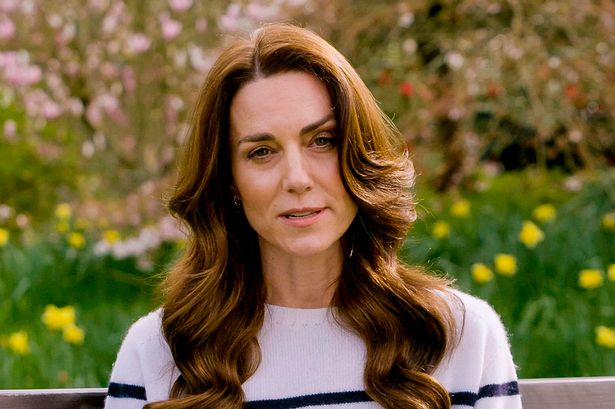More Abortion Bans Lead to More Deaths of Women
January 22, 2020
Every year worldwide 42 million women with unintended pregnancies have an abortion. With the approval of state laws here in the United States that chip away at a woman’s right to choose, the time is now for young women to become proactive to protect their reproductive rights.
Abortion is a medical procedure that everyone should have a right to. There are three types, self-induced, medical, and surgical.
Some legislators are banning abortion and placing charges on doctors as well as mothers that carry out the procedure. States like Ohio, Arkansas, Kentucky, Iowa, North Dakota, and more only offer legal abortions in the first trimester. While states like Louisiana and Utah have banned abortions completely after a fetal heartbeat has been detected.
The Ohio State Legislature is poised to pass what many have called, the “Abortion Murder Law.” This law states that doctors and mothers can face some jail time to life in prison for performing an abortion. However, the loophole in this scary law makes it even more terrifying. Doctors can avoid jail time if they do everything in their power to save the fetus from dying, which includes re-implanting the fetus into the mother.
“That’s impossible,” wrote Ohio OB/GYN Dr. David Hackney. “We’ll all be going to jail.” Many doctors around the country are arguing against this Abortion Murder Law. “Ohio’s bill requiring reimplantation of hopelessly doomed ectopic pregnancies puts pregnant women at high risk of death,” tweeted Utah physician Dr. Kathie Allen, pointing out that ectopic pregnancy is the “leading cause of death in 1st trimester.”
Politicians don’t seem to understand that women still go through with unsafe and illegal abortions if they don’t have access to a safe one. When abortion was illegal in the United States (from the late 1800s until 1973), more pregnant women died from complications from self-induced abortions or abortions performed by untrained practitioners than from any other cause.
Dr. Daniel Grossman, a professor at the University of California, San Francisco, told Vox that this argument “could lead some patients to really question the advice of their doctor and maybe wait longer before getting the necessary treatment and put their lives at risk.
Making abortions illegal only makes young women more susceptible to extremely unsafe, desperate measures. 68,000 deaths are generated by unsafe abortion, many of those in developing countries where safe and legal abortion services are difficult to access.
In the Russian Federation, abortion rates sharply declined with the advent of modern contraceptive technologies. In 1992, the Russian government began to support family planning programs and promoting contraceptive use by distributing free contraceptives. In the following decade, contraceptive use rose and the abortion rate plummeted: between 1988 and 2001, modern contraceptive use increased in Russia by 74 percent, while the abortion rate declined by 61 percent.
This shows that it is possible to limit the number of unwanted pregnancies without having to even resort to abortion. The government should at least try to make it easier for women to obtain these devices before turning to legal punishment.
Although the Pro-Life point of view is that “once an egg inside a female is fertilized, it is a living thing” can be argued, many conservatives forget about the already existing lives in this situation. If a woman is willing to get an abortion, she is either physically or mentally unprepared to raise a child. How is it fair to force this child to be born into an unstable situation?
Their intentions are understood in the fact that they want to prevent the death of an unborn child. But restricting a women’s rights is not acceptable. Removing the option of safe abortion will not stop women from having abortions. Now, they will only be unsafe and illegal.
Removing the option of safe abortions also does not force an unprepared mother to adequately take care of a child. These children that are forced to be born will most likely end up circling in adoption programs and foster homes for most of their lives. They will grow up without having any sense of stability to guide them. The World Health Organization states that abortion-related deaths leave 220,000 children motherless.
There are exceptions though; there are definitely some people who overcome this lifestyle they were born into. But most spend the entirety of their lives without knowing what a stable home is. No one deserves to go through a lifetime of misery which would be almost forced upon them without a family to rely on.
Overall, with the restrictions put in place for abortions, it is almost impossible for a woman to safely and legally get this procedure in some areas of the country. If the government were to put their attention on making contraceptive devices more available and less expensive, people would rarely have to resort to abortion at all. Either way, it is a woman’s body and what they do with it should be their own choice.

















